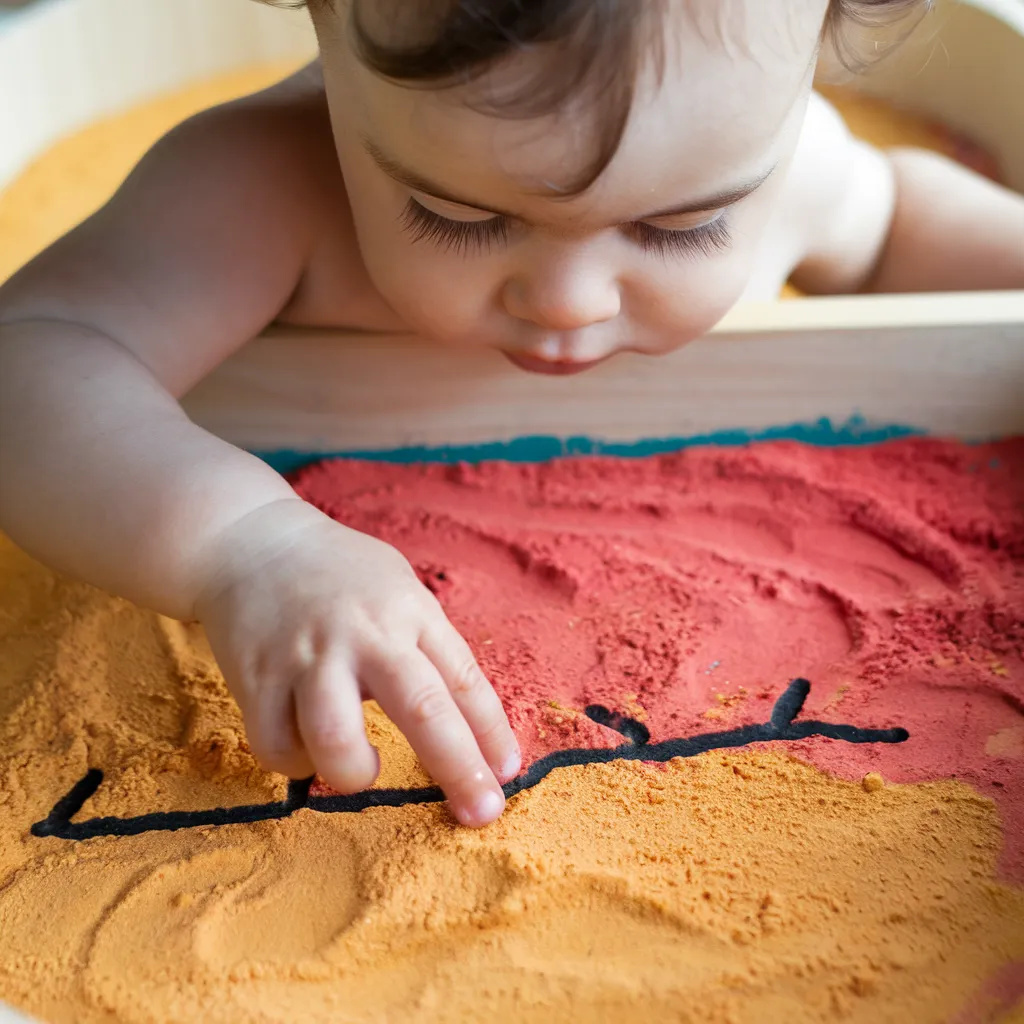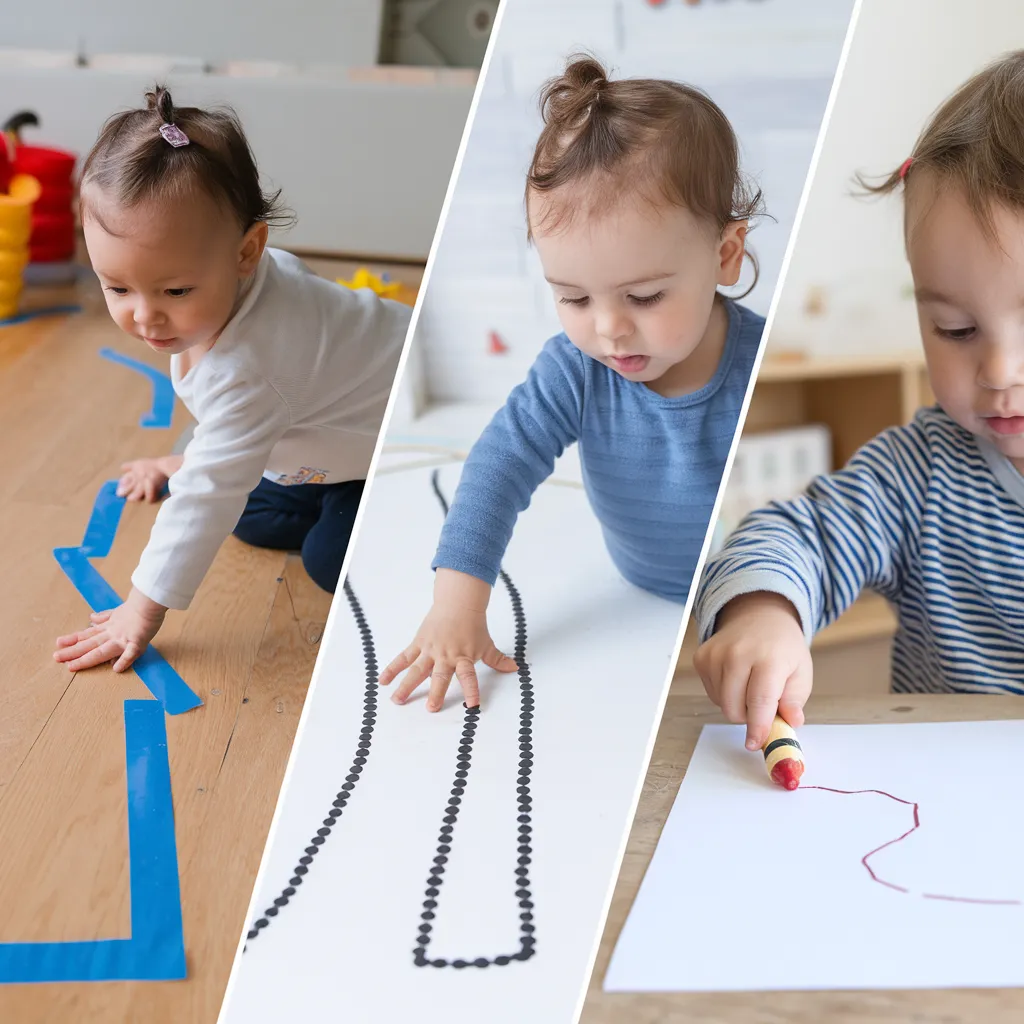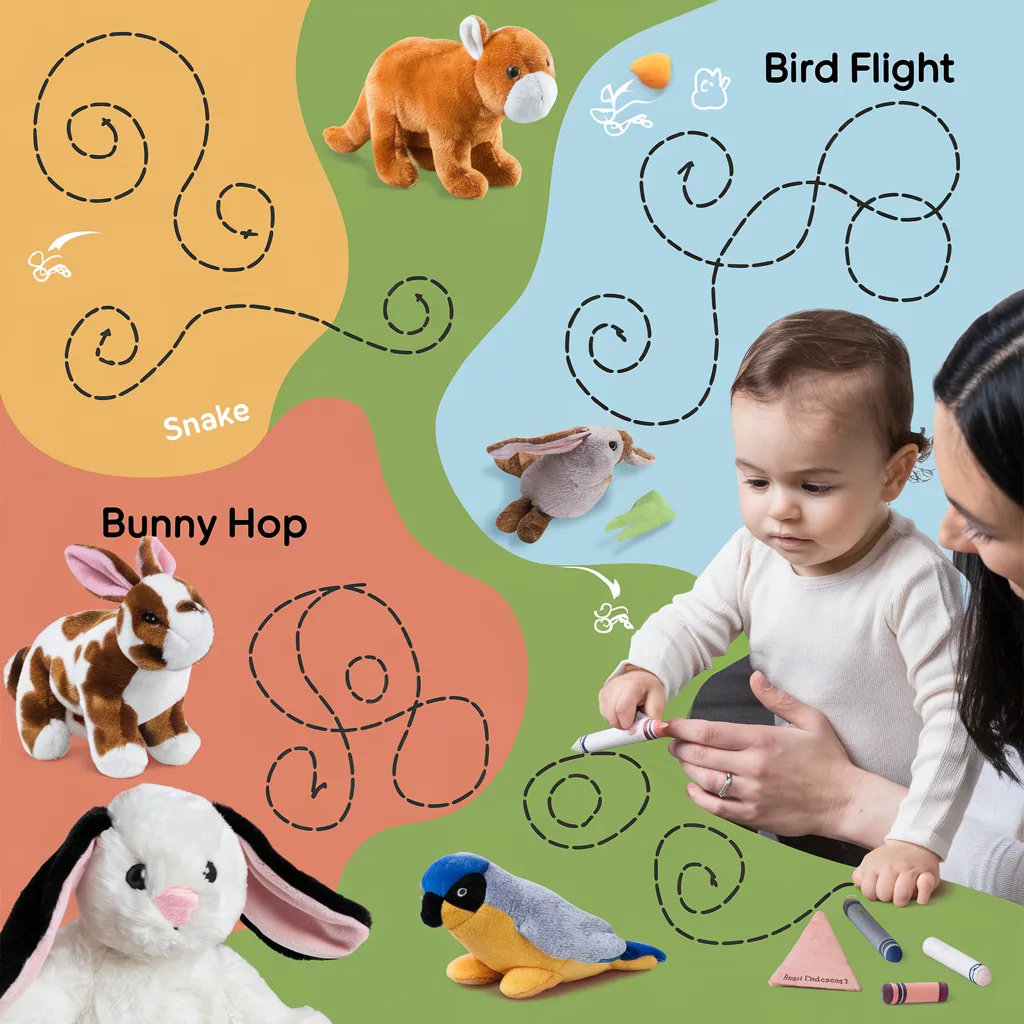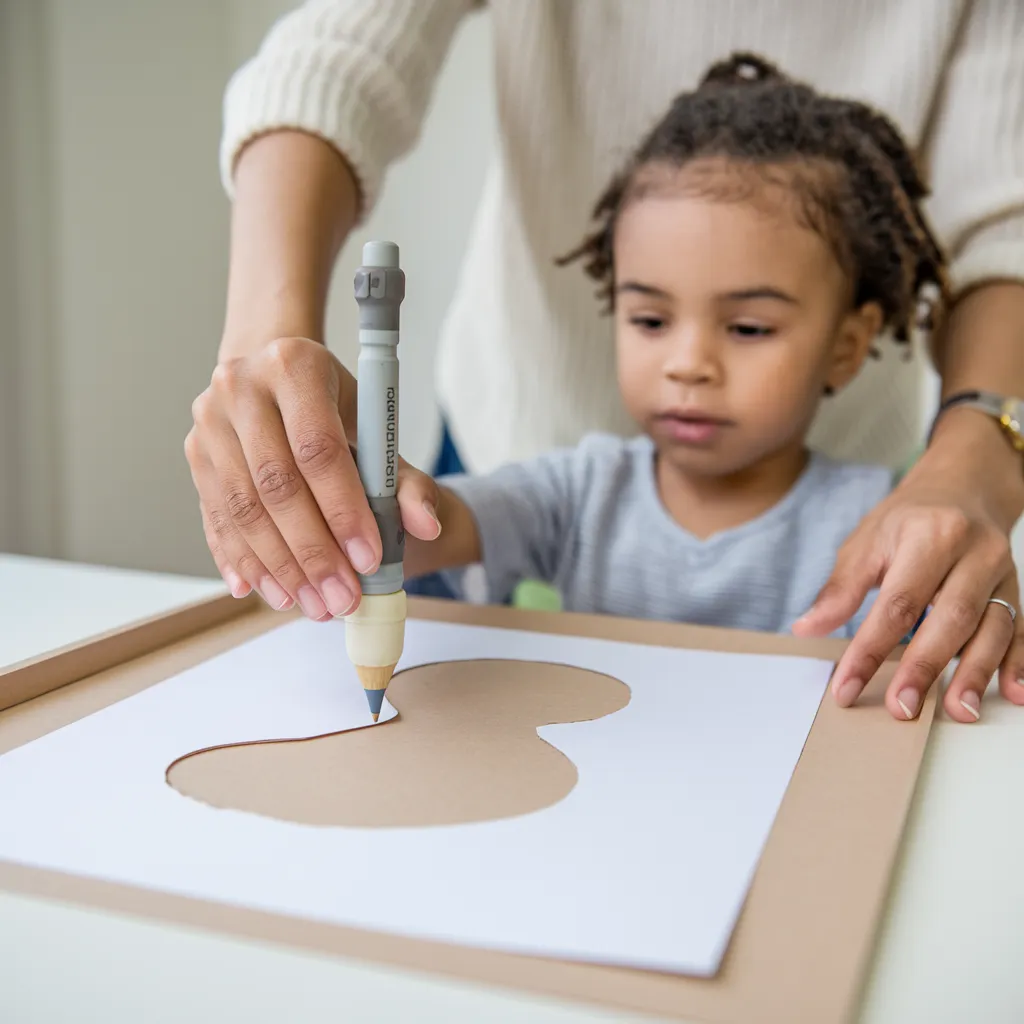Tracing lines for toddlers provides a crucial foundation for early writing development, fine motor skills, and cognitive growth. These seemingly simple activities—where little ones follow paths with their fingers or writing tools—establish neural pathways that support future academic success. Whether you’re a parent looking for home activities or an educator planning developmentally appropriate lessons, introducing tracing lines for toddlers creates engaging opportunities that prepare children for more complex skills like letter formation and drawing. The key lies in making these experiences playful and age-appropriate, gradually increasing challenge levels as children develop confidence and control. From sensory trays to giant floor paths, the right tracing activities transform ordinary moments into powerful learning opportunities.

Developmental Benefits of Tracing Lines for Toddlers
Tracing lines for toddlers contributes significantly to multiple developmental domains:
Physical Development
- Fine motor skills: Small muscle control in hands and fingers
- Hand-eye coordination: Visual tracking with synchronized hand movements
- Pincer grip development: Preparation for proper pencil holding
- Bilateral coordination: Using both sides of the body in controlled ways
- Muscle endurance: Building stamina for extended writing and drawing
Cognitive Development
Tracing lines for toddlers supports critical brain functions:
- Visual Processing Enhancement
- Recognizing and following directional patterns
- Distinguishing shapes and lines from backgrounds
- Understanding spatial relationships
- Developing visual memory for shapes and patterns
- Tracking from left to right (pre-reading skill)
- Executive Function Building
- Sustaining attention on tracing tasks
- Following multi-step directions
- Developing patience and persistence
- Planning motor movements
- Self-regulation during challenging activities
- Pre-Writing Skill Formation
- Understanding that marks communicate meaning
- Recognizing basic line types (horizontal, vertical, diagonal)
- Building muscle memory for common writing movements
- Developing stroke directionality awareness
- Creating functional grip patterns
Age-Appropriate Tracing Lines for Toddlers Activities

Different developmental stages require specific approaches:
Beginning Tracing Lines for Toddlers (18-24 months)
- Sensory Tray Finger Tracing
- Fill shallow trays with sand, salt, or cornmeal
- Demonstrate simple straight line paths
- Guide toddler’s finger initially, then allow independent tracing
- Celebrate any mark-making, regardless of accuracy
- Keep sessions brief (1-2 minutes) and playful
- Large-Scale Body Movements
- Create giant floor lines with tape or chalk
- Encourage walking along straight paths
- Make « car roads » for toy vehicles to follow
- Develop hopscotch-style straight line jumping games
- Use ribbons or streamers for air-tracing movements
- Water Painting
- Provide large brushes and water for outdoor « painting »
- Draw simple line patterns on chalkboards for water tracing
- Create water painting stations on vertical surfaces
- Offer squeeze bottles for line-making on sidewalks
- Emphasize process over precision
Intermediate Tracing Lines for Toddlers (24-30 months)
- Play Dough Line Creation
- Roll « snakes » to form straight and curved lines
- Press straws or craft sticks into dough to create line patterns
- Provide line templates under clear plastic for tracing with dough
- Create impression tools for making dotted lines in dough
- Combine lines to make simple shapes (square, triangle)
- Finger Paint Pathways
- Spread finger paint on trays or in sealed plastic bags
- Demonstrate simple horizontal and vertical lines
- Introduce zigzag and wavy lines as skills develop
- Create start and end points marked with stickers
- Photograph creations to show progress over time
- Light Table Explorations
- Place line pattern transparencies on light tables
- Offer large translucent beads to arrange along lines
- Provide dry-erase markers for tracing over patterns
- Create colored overlays for multi-sensory experiences
- Develop simple mazes with straight-line paths
Advanced Tracing Lines for Toddlers (30-36 months)
- Simple Worksheet Introductions
- Offer thick, washable markers and chunky crayons
- Begin with widely-spaced, bold lines
- Create high-contrast paths (dark lines on light paper)
- Use stickers to mark starting points
- Limit to 2-3 short lines per session
- Connecting Point Activities
- Develop dot-to-dot activities with minimal points
- Create picture completion activities with simple lines
- Make sticker connections with straight paths
- Introduce « helper dots » along challenging paths
- Create meaningful images (simple faces, houses) with connected lines
- Multi-Sensory Tracing Tools
- Introduce texture tracing boards with raised lines
- Create scented marker activities for added sensory input
- Develop magnetic tracing activities with wands
- Offer vibrating pencils for sensory feedback
- Provide textured paper for increased tactile awareness
Creative Approaches to Tracing Lines for Toddlers

Keep engagement high with these innovative strategies:
Thematic Tracing Lines for Toddlers
- Animal-Inspired Tracing
- Create snake paths that slither across paper
- Develop bunny hop dot patterns
- Make bird flight paths with swooping lines
- Design caterpillar crawl patterns with curved lines
- Create spider web patterns with intersecting lines
- Vehicle-Based Tracing
- Design car and truck routes with straight and curved roads
- Create airplane flight paths with loops and arcs
- Develop train track patterns with parallel lines
- Make boat sailing routes along wavy water lines
- Design rocket ship launch paths with vertical lines
- Nature-Themed Tracing
- Create flower stem patterns with vertical lines
- Develop raindrop falling patterns with diagonal lines
- Make tree branch patterns with angled lines
- Design leaf vein patterns with center lines and offshoots
- Create rainbow arc patterns with curved lines
Interactive Tracing Lines for Toddlers
- Cooperative Tracing Games
- Create giant floor mazes for joint navigation
- Develop follow-the-leader tracing activities
- Make mirror-image tracing for partners
- Design alternating turn path completion games
- Create storytelling paths with sequential tracing
- Digital Tracing Experiences
- Introduce simple touchscreen tracing apps
- Create projected floor games with full-body tracing
- Develop interactive whiteboard tracing activities
- Use digital pens with appropriate tablet applications
- Create digital/physical hybrid activities with printed templates
Troubleshooting Common Tracing Lines for Toddlers Challenges

Address typical difficulties with these approaches:
Overcoming Resistance
- Engagement Strategies
- Connect tracing to toddler’s interests (favorite characters, animals)
- Create tracing « treasure hunts » with rewards along paths
- Develop social stories about tracing benefits
- Model enthusiasm during tracing activities
- Incorporate favorite colors and themes
- Physical Support Techniques
- Use hand-over-hand guidance initially, then fade support
- Create adaptive tools with larger grips
- Develop stabilization strategies for papers and boards
- Position activities at optimal heights (table vs. floor vs. wall)
- Consider seating support for proper posture
Progression Planning
- Skill-Building Sequence
- Begin with horizontal lines (easiest for most toddlers)
- Progress to vertical lines
- Introduce diagonal lines once basics are mastered
- Add curved lines and simple arcs
- Combine line types in increasingly complex patterns
- Success Indicators
- Look for gradually improving line quality
- Notice increased attention span during activities
- Observe growing confidence and independence
- Monitor developing grip patterns
- Track progression from finger to tool tracing
Conclusion
Tracing lines for toddlers serves as a foundational skill that supports numerous developmental domains while preparing children for future academic success. Through playful, age-appropriate activities that gradually increase in complexity, parents and educators can help toddlers develop essential fine motor skills, visual processing abilities, and pre-writing foundations. The key lies in keeping tracing experiences positive, pressure-free, and embedded within meaningful play. Start with simple, large-scale activities using fingers and whole-body movements before gradually introducing tools and more complex patterns. Remember that each child develops at their own pace—celebrate small improvements and maintain a playful approach that nurtures both skill development and a love of learning. With consistency and creativity, these early tracing experiences will establish neural pathways that support writing, drawing, and countless other skills for years to come.
42 Inspiring Theme-Based Classroom Decorations That Transform Learning Environments
Frequently Asked Questions
When should my toddler start tracing lines?
Most toddlers are ready for introductory tracing experiences around 18 months, though readiness varies considerably. Look for signs like interest in mark-making, ability to grasp objects with a developing pincer grip, and growing attention span. Begin with finger tracing in sensory materials rather than tool-based tracing, creating large-scale experiences that involve whole-hand movements. Remember that early « tracing » might look more like random marks than accurate line-following—this exploration phase is developmentally appropriate and valuable. Progress from large body movements to finger tracing, then to tool-assisted tracing as development allows. The focus should always be on enjoyable exploration rather than precision.
How long should tracing sessions last for toddlers?
Keep tracing activities brief, typically 2-5 minutes for younger toddlers (18-24 months) and gradually extending to 5-10 minutes for older toddlers (30-36 months) as attention spans develop. Watch for signs of fatigue or frustration like changing grip, looking away, or becoming fidgety—these indicate it’s time to end the session positively or switch activities. Multiple brief sessions throughout the day are more effective than one longer session. Consider incorporating tracing into your daily routine, perhaps during transition times or as part of regular play periods. Always end before frustration sets in, preserving the activity as a positive experience.
What if my toddler shows no interest in tracing lines?
If your toddler seems resistant to traditional tracing activities, shift your approach rather than forcing participation. Try incorporating tracing into activities they already enjoy—perhaps creating roads for favorite toy cars or paths for animal figures. Move tracing to different sensory bases like shaving cream, pudding, or colored sand to increase sensory appeal. Consider your timing; toddlers may be more receptive during their personal peak alertness periods. Sometimes resistance indicates the activity is too challenging or not challenging enough—try simplifying or adding interesting elements as needed. Remember that development isn’t linear; periodic breaks from tracing followed by reintroduction often yield better results than persistent pressure.
How can I tell if my toddler is developing appropriate tracing skills?
Look for gradual progression rather than perfection. Early success indicators include increased focus during tracing activities, growing willingness to attempt tracing, and visible enjoyment of the process. Physical signs of development include more controlled arm and hand movements, improved ability to stay within boundaries (even if imperfectly), and evolving grasp patterns on tracing tools. Compare your child’s current abilities to their own previous attempts rather than to other children or standardized expectations. If you notice persistent difficulties like unusual grip patterns, extreme resistance, or significant hand tremors during tracing attempts past age three, consider consulting with your pediatrician or an occupational therapist for guidance.
What materials are best for tracing lines with toddlers?
Start with sensory materials like sand, salt, shaving cream, or finger paint for tactile finger tracing before introducing tools. When progressing to tool-based tracing, offer chunky, easy-grip implements like triangular crayons, short thick chalk, or washable dot markers rather than standard pencils or thin markers. Create tracing surfaces on vertical planes (taped to walls or easels) as well as horizontal surfaces to develop different muscle groups. Use high-contrast materials—dark lines on light backgrounds or vice versa—to support visual tracking. Laminate frequently used tracing cards or place them in sheet protectors for durability and repeated use. Remember that the best materials are those that match your child’s current development level while providing just enough challenge to encourage growth.
